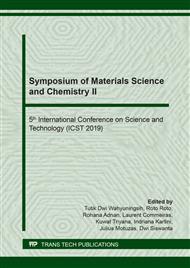p.368
p.377
p.385
p.392
p.399
p.406
p.412
p.418
p.424
Application of the CO2 Laser Photoacoustic Spectroscopy in Detecting Ammonia Gas (NH3) in Liver Disease Patient’s Breath
Abstract:
Using a CO2 laser photoacoustic spectroscopy with intracavity setup and multicomponent method we have done measurement on the ammonia, ehtylene and acetone gas concentrations in the breath of liver disease patients and in the healthy volunteers. The results of multicomponent analysis show that the average concentration of ammonia gas obtained from the breath of liver disease patients and healthy volunteers are (3.27 ± 0.75) and (1.34 ± 0.24) ppm, respectively. The highest and the lowest ammonia gas concentration of liver disease patients are 4.77 and 1.99 ppm. While, the highest and the lowest ammonia gas concentration of healthy volunteers are 1.89 and 1.08 ppm. For the ethylene and acetone concentrations, we found no significant difference between the average concentrations in the liver disease patients and in the healthy volunteers.
Info:
Periodical:
Pages:
399-405
Citation:
Online since:
April 2020
Keywords:
Price:
Сopyright:
© 2020 Trans Tech Publications Ltd. All Rights Reserved
Share:
Citation:


